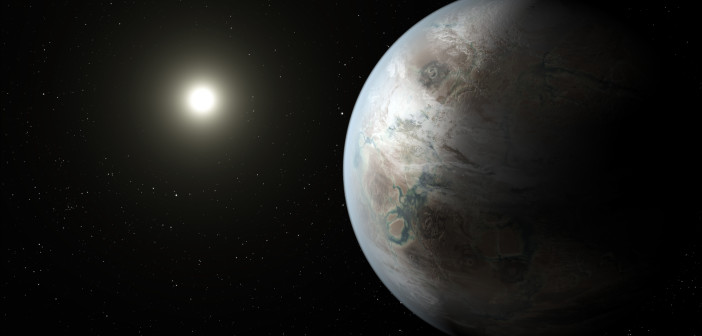Editor’s Note: In these last two weeks of 2015, we’ll be looking at a few selections from among the most-downloaded papers published in AAS journals this year. The usual posting schedule will resume after the AAS winter meeting.
Discovery and Validation of Kepler-452b: a 1.6 R⨁ Super Earth Exoplanet in the Habitable Zone of a G2 Star
Published July 2015
Main takeaway:

A phase-folded light curve showing the transit of Kepler-452b. Its transit lasts 10.5 hours, and its period is 385 days. [Jenkins et al. 2015]
Why it’s interesting:
Kepler-452b is the first near-Earth-sized planet to be found in the habitable zone of a Sun-like star — making this the closest analog to the Earth-Sun system found in the Kepler dataset so far.
About the history of the system (and the future of ours?):
The authors estimate that the system is ~6 billion years old, and that Kepler-452b has been in the habitable zone of its star throughout its lifetime — a substantially longer time than Earth has been around and habitable! Kepler-452b’s host star, in addition to being 1.5 billion years older than the Sun, is roughly 10% larger. This system might therefore provide a glimpse of what Earth’s environment may be like in the future, as the Sun slowly expands on its way to becoming a red giant.
Citation
Jon M. Jenkins et al 2015 AJ 150 56. doi:10.1088/0004-6256/150/2/56
